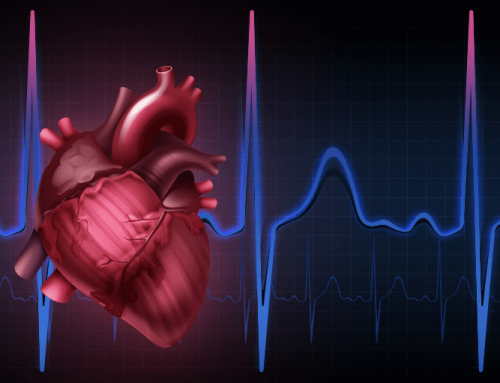The Difference Between Hypoxia and Hypoxemia
Oxygen is one of the most abundant gases on the planet, so it may come as a surprise that people with certain health conditions cannot get enough to maintain daily activities. As blood circulates throughout the body, it delivers oxygen from the lungs to the cells, tissues, and organs. If the amount of oxygen circulating in the blood decreases due to an inadequate amount in the air, the lungs’ inability to inhale and exhale appropriately, or the circulatory system not pumping blood efficiently, the body cannot operate normally and a condition called hypoxemia can develop. When hypoxemia worsens, and the oxygen levels in the tissues and organs begin to fall, hypoxia occurs. Without the correct amount of oxygen, damage to vital organs, specifically the heart, brain, and liver, occurs within minutes and could even lead to death. Therefore, it is crucial that the body is always maintaining normal oxygen levels.
Hypoxemia vs Hypoxia
When oxygen levels in arterial blood drop significantly, it is referred to as hypoxemia and is typically caused by a condition related to breathing or circulation. Normal oxygen saturation levels in the blood range from 95 percent to 100 percent, or 75 mmHg to 100 mmHg. When levels fall below 90 percent or 60 mmHg, hypoxemia occurs, and supplemental oxygen is required to increase the oxygenation of the blood. While hypoxemia and hypoxia are similar, they are not the same thing. Hypoxia cannot be measured directly; therefore, if hypoxemia is diagnosed and is severe, it suggests that hypoxia is also present due to the reduced amount of oxygen being delivered to the tissues. However, hypoxia may not be present in certain cases of hypoxemia if there is compensation by the heart. For instance, while exercising, blood oxygen levels decrease due to the exertion from the muscles, but heart rate increases in response to sustain oxygen delivery to the muscles in use. On the other hand, hypoxia can be present without hypoxemia if the tissues cannot use oxygen provided by the blood, which occurs in cyanide poisoning cases. Regardless, hypoxemia is the most common cause of hypoxia and is easily diagnosed using pulse oximeters and arterial blood gas testing.
Symptoms
Symptoms of hypoxemia vary depending on the severity and whether the underlying condition is acute or chronic. Acute hypoxemia, which is a sudden and severe onset of the condition, can cause shortness of breath, restlessness, headaches, fast heart rate, lightheadedness, confusion, and rapid breathing. As the severity of hypoxemia increases and hypoxia develops, symptoms worsen and can even lead to coma or death. Symptoms that occur in both chronic and acute hypoxemia, as well as hypoxia, include coughing, wheezing, and sweating. Severe hypoxia symptoms include the inability to communicate, fainting, lack of coordination, elevated blood pressure, visual disturbances, and cyanosis (turning blue).
Causes
A variety of circumstances and health conditions can lead to hypoxemia by interfering with the body’s ability to deliver normal amounts of oxygen to the tissues. Some of the main reasons hypoxemia occurs are a mismatch between oxygen inhalation and blood flow to and from the lungs, oxygen’s inability to enter the bloodstream, blood not being pumped to the lungs, breathing at a slow rate, and low amounts of oxygen in the air. The most common causes of hypoxemia include lung diseases like COPD, bronchitis, emphysema, pneumonia, asthma, heart conditions, sleep apnea, high altitudes, and strong pain medications. In addition to these conditions, hypoxia can also occur from cyanide poisoning, anemia, stroke, suffocation, carbon monoxide poisoning, cardiac arrest, choking, and smoke inhalation.
Treatment Options
Early diagnosis and prompt treatment are crucial to preventing the condition from escalating into a life-threatening situation, which can happen within minutes and cause irreversible damage to vital organs. Treatment involves getting oxygen into the blood as quickly as possible through supplemental oxygen. Oxygen is administered through a mask that covers the nose and mouth or through a nasal cannula. A CPAP machine can also increase oxygen levels in individuals with sleep apnea to prevent obstruction from the tongue and tissues in the back of the throat. In severe cases, when the individual cannot breathe on their own, intubation may be necessary. Intubation is a procedure in which a tube is placed into the airway through the mouth and hooked to a ventilator that pumps air directly into the lungs. Another way to increase the oxygen level in the blood is with a hyperbaric chamber. This involves a patient lying in a pressurized chamber filled with pure oxygen for a specific amount of time to increase the amount of oxygen taken in with each breath. After treating hypoxia/hypoxemia, it is important to then treat the underlying cause of the condition to prevent future episodes that could further damage vital organs.
So, while hypoxemia and hypoxia are similar, they are quite different in terms of symptoms, causes, and treatment. Regardless of what stage of the condition, it is important that you seek medical attention after symptoms arise before permanent damage occurs to the brain and heart. The best way to prevent low oxygen levels is to maintain a healthy diet, exercise, avoid smoking, keep any underlying conditions under control with treatment or medications, and avoid areas with decreased oxygen availability. This includes places with high altitudes, smoggy areas, or fires. If you believe you could be suffering from a disease that could cause hypoxemia or hypoxia, it is imperative to work with your physician to develop an action plan in case of emergency and find the best treatment to prevent any breathing complications.
















